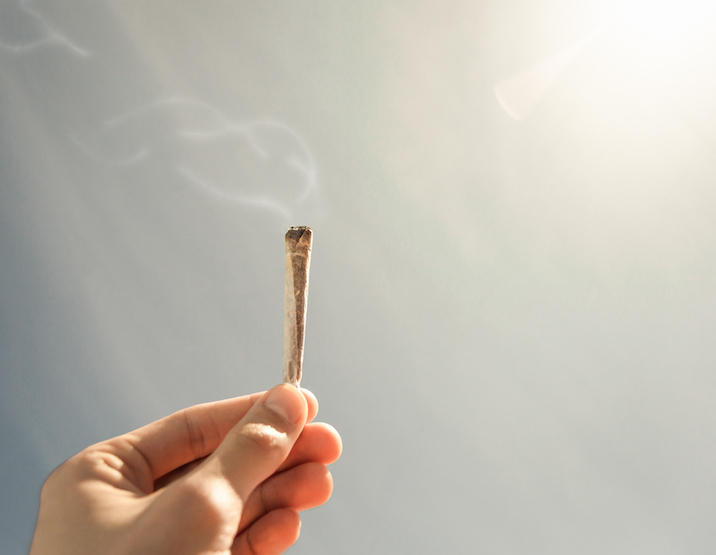You are here
Home 🌿 Medical Cannabis News 🌿 Smoking cannabis may not be healthier than tobacco, according to new research from McMaster 🌿Smoking cannabis may not be healthier than tobacco, according to new research from McMaster

There may be a host of ways to consume cannabis, from edibles to vape pens. But for two thirds of Canadians, smoking is still the most popular. Joints, pipes and bongs are so firmly entrenched in the culture of cannabis that it’s unlikely we’ll see a significant decline, even as more forms of cannabis are legally introduced.
But what is it doing to people’s lungs?
There’s a widely held belief that a joint isn’t as harmful as a cigarette because it’s more “natural.” Many people think tobacco and cigarettes as being laced with chemicals and really, how could smoking a dried flower be as bad as that?
According to new research from Hamilton, Ont.’s McMaster University, smoking cannabis and smoking tobacco are more similar than you might think.
Cannabis vs. cigarette smoke
According to a 2008 study, cannabis smoke can contain up to 20 times as much ammonia as tobacco. As well, hydrogen cyanide and nitrogen oxides levels are between three and five times higher than what was found in tobacco smoke. In fact, even tar is 30 per cent higher in cannabis smoke.
How is it possible for all these chemicals to be in natural cannabis plants? It’s actually more accurate to say that they’re by-products of combustion, or burning cannabis, that can be found in the smoke.
While there’s a comprehensive collection of studies looking at the effects of tobacco smoke on the lungs, studies looking at the physiological effects of cannabis smoke are few and far between, which is what led Dr. Jeremy Hirota, assistant Professor and Canada Research Chair at the Firestone Institute for Respiratory Health at McMaster University, to co-author a study on human lung cells, published in Physiological Reports (2019).
Is it cannabis itself that could damage my lungs?
Hirota says it’s the combustion of plant material, or organic material, that seems to be driving the negative impact tobacco and cannabis have on the lungs.
“When we did our study, whether you burned tobacco or you burned cannabis, what happened was very similar,” he tells The GrowthOp. “It seems to be the burning. And our data is pointing towards genes in the cells that respond to burning by-products.”
Even if tobacco was laced with multiple pesticides and other chemicals, and cannabis was organically grown in someone’s backyard, Hirota says all of that is overwhelmed by the actual combustion of either plant. Any safer profile that cannabis might have is erased when it’s combusted, because it’s such a strong signal.
This is the case when burning wood or any other biomass, as well as pollution from diesel or other sources – the particulate matter these sources leave in the air creates an inflammatory response in the lungs.
What are the possible lung health impacts of smoking weed?
It’s important to emphasize the word “possible” here, since the study was on lung cells, rather than actual people. The results of Hirota’s study indicated that cannabis smoke had similar effects on lung cells to tobacco smoke, including increased inflammatory response and lowered antiviral response.
What that inflammatory response might look like in a person is chronic bronchitis, where several times a year the large and small airways (bronchi) become inflamed or irritated and create more mucus. This can lead to wheezing, coughing and shortness of breath.
In terms of antiviral response, “some of our data in the paper suggests that cannabis smoke exposure can dampen antiviral responses in these lung cells that we look at, which are the very cells that are going to detect a virus when it comes into the lungs,” Hirota says.
To be clear, that’s what is happening in the cells, he says, but he’s unaware of any studies on actual humans that have attempted to follow this hypothesis.
Is vaping different, or will it hurt my lungs too?
In short, vaping is a different method of delivering cannabis to your system. Instead of the combustion that takes place when you light a joint, the flower or resin is heated until it emits the THC and/or CBD as a vapour.
In both cases you inhale the cannabinoids through the lungs, but studies indicate there are fewer negative respiratory effects when you vape. This is because the majority of the toxicants in cannabis smoke are a result of the combustion, or burning. The lower heat used to vape cannabis doesn’t create those toxicants.
Before it was legalized for medical or recreational use, cannabis research relied heavily on users who self-reported symptoms. Less red tape now, however, means more studies like Hirota’s will be approved, helping us to better understand the physiological effects of cannabis.
420 Intel is Your Source for Marijuana News
420 Intel Canada is your leading news source for the Canadian cannabis industry. Get the latest updates on Canadian cannabis stocks and developments on how Canada continues to be a major player in the worldwide recreational and medical cannabis industry.
420 Intel Canada is the Canadian Industry news outlet that will keep you updated on how these Canadian developments in recreational and medical marijuana will impact the country and the world. Our commitment is to bring you the most important cannabis news stories from across Canada every day of the week.
Marijuana industry news is a constant endeavor with new developments each day. For marijuana news across the True North, 420 Intel Canada promises to bring you quality, Canadian, cannabis industry news.
You can get 420 Intel news delivered directly to your inbox by signing up for our daily marijuana news, ensuring you’re always kept up to date on the ever-changing cannabis industry. To stay even better informed about marijuana legalization news follow us on Twitter, Facebook and LinkedIn.




